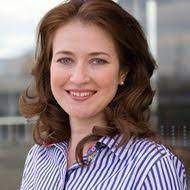Toys Prove to Be Better Investment Than Gold, Art, and Financial Securities

Unusual ways of investment, such as collecting toys, can generate high returns. For example, secondary market prices of retired LEGO sets grow by 11% annually, which is faster than gold, stocks, and bonds, HSE University economists say. Their paper was published in the Research in International Business and Finance journal.
According to a survey by Barclays, rich people invest about 10% of their wealth in jewellery, art, antiques, collectible wines, and cars (in addition to traditional investment in financial securities). Demand for such goods is particularly high (as is growth in their prices) in developing countries, such as China, Russia, and Middle Eastern countries. These alternative investments are well-studied, unlike more unusual goods whose purchase might seem less serious: LEGO sets, Barbie dolls, superhero minifigures, or model cars and trains.

Victoria Dobrynskaya, one of the study’s authors and Associate Professor at the Faculty of Economic Sciences
‘We are used to thinking that people buy such items as jewellery, antiques or artworks as an investment. However, there are other options, such as collectible toys. Tens of thousands of deals are made on the secondary LEGO market. Even taking into account the small prices of most sets, this is a huge market that is not well-known by traditional investors.’
There may be several reasons for the rapid growth in the price of the sets. First, they are produced in limited quantities, particularly special collections dedicated to iconic films, books, or historic events. Second, after sets are retired, the number of them available on the secondary market is not large: many owners don’t see value in them (and lose or toss parts), while others, on the contrary, value them and don’t want to sell them. Third, LEGO sets have been produced for several decades and have a lot of adult fans. It would be reasonable to assume that the more time has passed since the set was manufactured, the more it would be valued as a classic sample or a nostalgic object. However, there had been no academic studies to substantiate this assumption.
The authors of the paper looked at the prices of 2,322 LEGO sets from 1987-2015. The dataset included information on primary sales and online auction transactions (only sales of new unopened sets were selected). Secondary market prices usually start to grow two or three years after a set is retired, but there is a significant variation in returns ranging from -50% to +600% annually. Prices of small and very big sets grow faster than prices of medium-sized ones, probably because small sets often contain unique parts or figures, while big ones are produced in small quantities and are more attractive to adults. Prices of thematic sets dedicated to famous buildings, popular movies, or seasonal holidays tend to experience the highest growth on the secondary market (the most expensive ones include Millennium Falcon, Cafe on the Corner, Taj Mahal, Death Star II, and Imperial Star Destroyer). Another attractive category includes sets that were issued in limited editions or distributed at promotional events: rarity increases their value from the collectors’ perspective.
Average returns on LEGO sets are 10-11% annually (and even higher if the new set was purchased on the primary market with a discount), which is more than stocks, bonds, gold, and many collectible items, such as stamps or wines, yield.
In addition, LEGO prices are weakly dependent on the stock market (they were growing even during the financial crisis of 2008) and are relatively low in comparison to art, antiques, and cars, which makes them a reliable and accessible method of investment. However, the authors of the study say that investment in LEGO is worthwhile only in the long term (i.e., over three years) and incurs higher transaction costs (e.g., delivery and storage) than investment in financial securities.
‘Investors in LEGO generate high returns from reselling unpacked sets, particularly rare ones, which were produced in limited editions or a long time ago. Sets produced 20-30 years ago make LEGO fans nostalgic, and prices for them go through the roof. But despite the high profitability of LEGO sets on the secondary market in general, not all sets are equally successful, and one must be a real LEGO fan to sort out the market nuances and see the investment potential in a particular set,’ Victoria Dobrynskaya said.
See also:
HSE University and University of Campinas Join Forces to Build Alternative Financial System
HSE University and the University of Campinas (UNICAMP, Brazil) have announced the launch of a major joint research project to develop new approaches to an alternative international financial system. The initiative, which brings together leading experts in global economics and finance, seeks to analyse the current state of international financial architecture and explore ways of transforming it in the context of a changing geopolitical landscape.
LFE-ICEF International Finance Conference: Exchanging Ideas and Building Networks
On November 22, 2024, the International Laboratory of Financial Economics (LFE, ICEF HSE) hosted the 13th International Moscow Finance Conference, bringing together researchers and experts from various countries to discuss current issues in financial economics. In his welcoming speech, Vladimir Sokolov, Head of the Laboratory, emphasised the significance of financial market research for the global economy.
The ICEF-CInSt Conference as a Platform for International Research Networking
On November 24–25, 2023, the 12th ICEF-CInSt International Finance Conference took place in Moscow. Researchers from Russia, China, Hong Kong, Taiwan, the USA, Canada, Italy, and the United Kingdom contributed as speakers and discussants. The organisers and participants of the conference shared their impressions of the event with the HSE News Service.
‘You Can Proudly Call Yourself a Strategic Investor, Not a Speculator’
HSE University’s Online Campus is accepting applications for ‘Master of Finance’, an online programme taught in English at the HSE Banking Institute. The design of the online programme meets the needs not only of current students, but also of working professionals who want to expand their knowledge of financial strategies and learn how to increase their investments and diversify risks.
Laws of Investment Attractiveness: Nizhny Novgorod Hosts Investment Leaders Forum
Nizhny Novgorod has hosted the Investment Leaders Forum organised by the Nizhny Novgorod Region Development Corporation jointly with executive authorities under the patronage of Nizhny Novgorod Region Governor Gleb Nikitin. The participants discussed the region's investment potential and highlighted the best practices in investment attraction and the support and implementation of investment projects. The forum was partnered with HSE University.
Researchers in St Petersburg Can Predict Weekly Stock Performance from Media News
Researchers from VTB and HSE University-St Petersburg have come up with an algorithm for predicting stock price fluctuations in the Russian market by analysing financial news. By making financial projections for next week (or month), the novel STTM (Stock Tonal Topic Modelling) algorithm can help investors build more effective financial strategies. The paper has been published in PeerJ Computer Science.
Stock Market Forces Shown to Drive Cryptocurrency Returns
Having examined the impact of various factors on cryptocurrency returns, HSE economists found that fluctuations in cryptocurrency prices can be better explained by equity market risks than by factors specific to the crypto market, suggesting greater linkages between cryptocurrency and equity markets than previously believed. The study is published in a special issue of International Finance Review.
'Conferences Publicly Push Important Research to New Levels'
During his visit to ICEF, Sergey Tsyplakov, a professor in finance at Moore School of Business of the University of South Carolina, delivered a lecture to students and contributed to ICEF-CInSt 11th International Moscow Finance Conference as a keynote speaker. In this interview, Sergey shares what surprised him about ICEF students, why scientific paper reviewing may not always be objective, and why people on Wall Street read academic research.
‘We Have Utilised the Strengths of Two Events’
On October 14, HSE University will host the 11th ICEF-CInSt International Moscow Finance Conference. This year’s event is the result of the joint organisational efforts of the International Laboratory of Financial Economics (LFE ICEF) and the Centre for Institutional Studies (CinSt). Vladimir Sokolov and Maria Semenova, members of the conference's organising committee, spoke to the HSE News Service about the programme and participants of the event.
‘Our Task Is to Preserve the Market Segment as Much as Possible’
What risks is the Russian financial system facing today? What is the Central Bank of Russia going to do to mitigate them? Why do we need a high key rate? Has the regulator changed its approach to the building of forex reserves? Will the regulator remain hawkish on cryptocurrencies? Ksenia Yudaeva, First Deputy Governor of the Central Bank of Russia, answered these and other questions during a round table entitled ‘Russia’s Financial Sector under New Global Conditions’. The event was held as part of the XXIII Yasin (April) International Academic Conference.


